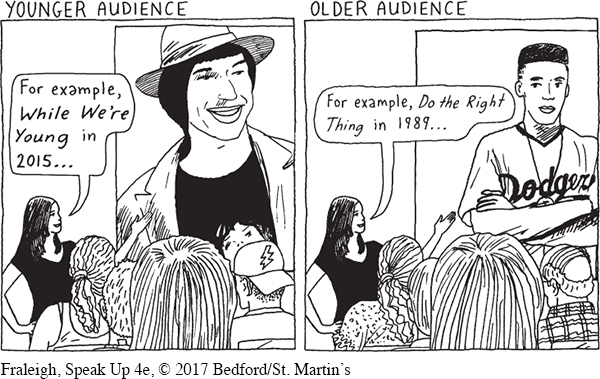Consider Your Audience
Because presentation aids become part of the message you are sharing with listeners, your analysis of your audience should drive your aid selection. When choosing appropriate aids, be sure to consider audience demographics and listeners’ prior exposure. Ask yourself, “Of all the possible aids for this speech, which one or which combination would work best with this audience?”
Demographics. Think about the demographics of your audience. Demographics—
420
For example, a student named Anna is giving a presentation on costume design in film. The main point of her speech is that clothing plays an important role in defining film characters. As she speaks, she clicks through images from films to show that costume designers have carefully chosen contemporary clothing that can offer insights into characters’ personalities and experiences. In presenting this speech to a class of traditional-
Prior Exposure. As noted in Chapter 5, prior exposure to certain elements of your speech may positively or negatively influence how your audience responds to those elements. This can be true of presentation aids as well. Consider Crystal, a student who gave a persuasive speech opposing abortion. She knew from interviews that many of her listeners identified themselves as pro-

421

How can you determine whether your audience has had prior exposure to the presentation aids you’re considering—
Has my audience seen or heard this aid before? If so, proceed to the next question.
What was the result of this prior exposure? Were listeners persuaded to take the action the speaker advocated? If not, proceed to the next question.
Why was the prior exposure ineffective? Ask yourself how you can avoid repeating the mistakes made by the previous presenter, who failed to persuade his or her audience through those particular aids.